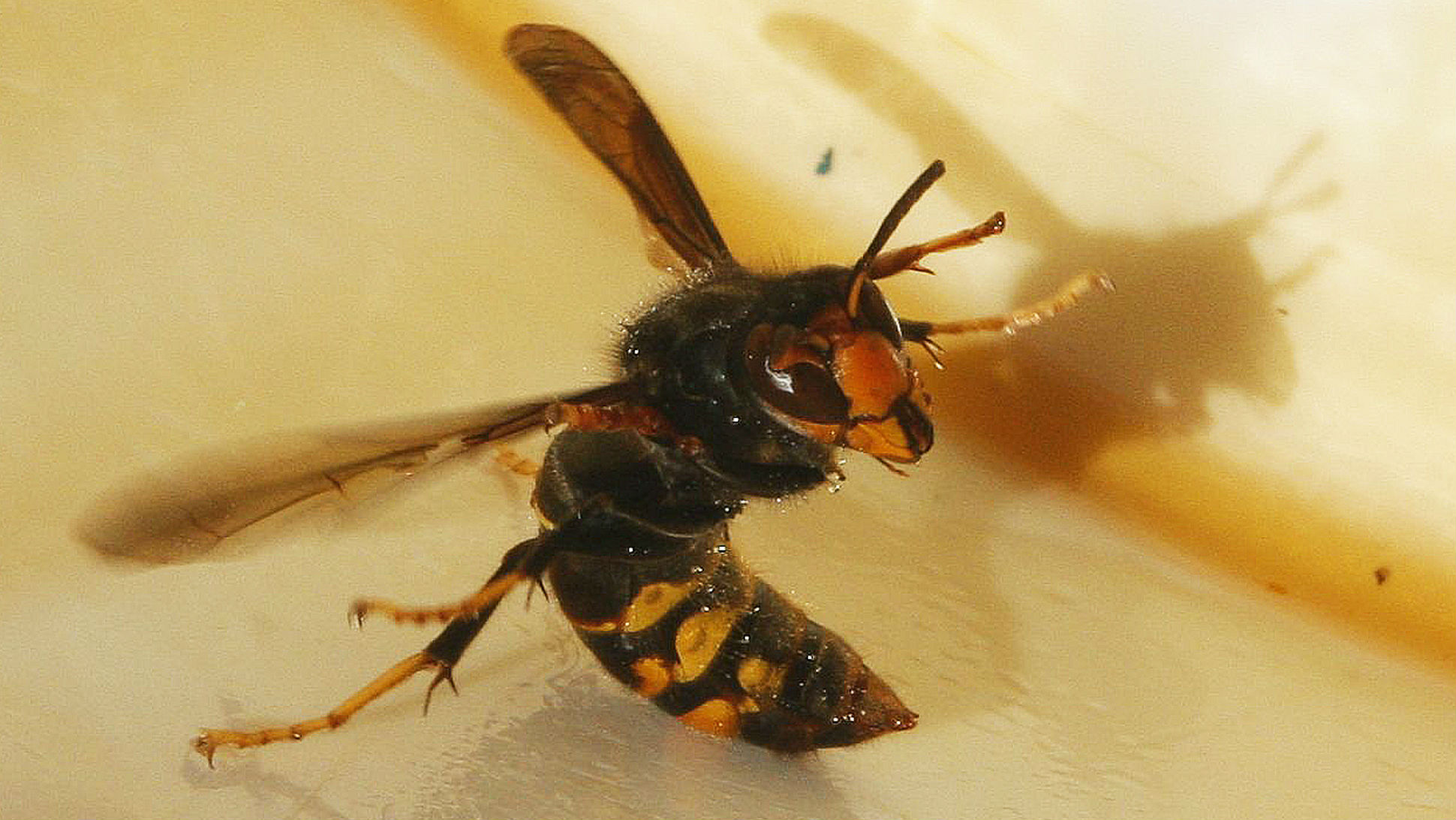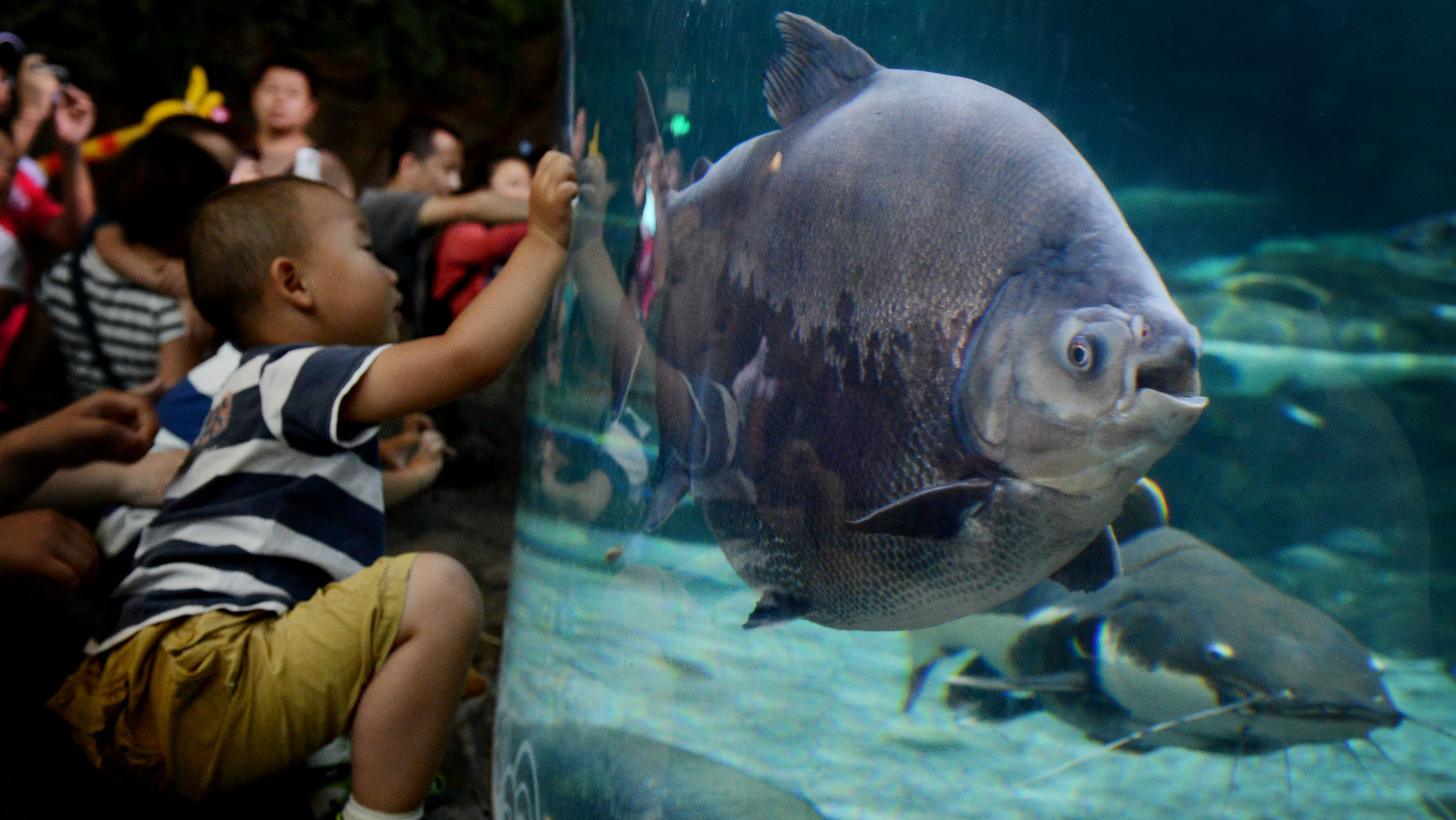‘Alien’ animal and plant species threatening the UK
Reports show the vicious Asian hornet is spreading through France and likely to cross into Britain. Channel 4 News looks at several non-native species that have been spotted in the UK in recent years.

The Asian hornet is but one of many invasive “alien” species which appear on Britain’s doorstep. There are believed to be 2,000-plus non-native species of animals and plants that have found their way here.
Reasons vary for the migration of foreign species to Britain, but among these are thought to be increasing tourism and trade, while climate change may also play a role in their spread, by making areas more suitable for new plants and animals.
Asian hornet
The Asian hornet – Latin name Vespa velutina nigrithorax – can grow to four-times the size of our native British honey bee. It packs a poisonous sting and feeds on insects, including honey bees.
Native to Asia, this hornet has spread widely within France since 2004 and more recently crossed into Belgium, Spain, Portugal, and Italy according to the Food and Environment Research Agency. The hornets are thought to have entered France accidentally in a consignment of pottery from China.
The Department for Environment, Food and Rural Affairs (Defra) said the species is a highly effective predator and, should it reach the UK, could cause catastrophic losses to our own bee population. The Asian hornet’s peak season is August through September.
Although there have been no confirmed sightings in Britain to date, Defra is urging bee keepers and members of the public to report suspected sightings of the hornet or its nests to the National Bee Unit and Non-native Species Secretariat. A response strategy was established last year to manage confirmed sightings.

Testicle-biting pacu fish
Known as “The ball-cutter” or “nut cracker”, the piranha-like pacu is native to the Amazon. With a mouth-full of uncannily human-looking teeth, it can grow to 90cm and weigh up to 25k.
The fish was found in European waters for the first time in August with experts warning men to keep their trunks on if swimming in the Øresund channel between Denmark and Sweden.
A pacu has since been fished from the River Seine, the Paris prefecture of police revealed on Tuesday.
While pacu probably turn up in peculiar places because someone has dumped them, if they can survive the Seine, it is hard to see why they could not thrive in the Thames.
Fish expert Henrik Carl told Swedish news site the Local in early August: “The pacu is not normally dangerous to people but it has quite a serious bite. There have been incidents in other countries, such as Papua New Guinea where some men have had their testicles bitten off.
“They bite because they’re hungry, and testicles sit nicely in their mouth.”
Natural pawn killers
Killer shrimp, possibly introduced by shipping from the Caspian sea, were identified in the UK in 2010. These ravenous scavengers with large jaws have since colonised our waterways, killing and displacing native species, and pose a significant threat to hundreds of ecological sites.

Parakeet colonies
Parakeets are now well established throughout much of Britain, although up to 90 per cent are found in London. They originally came from as diverse regions as the Himalayas and South American rainforest.
In 2009, their population was thought to number over 40,000 and growing at an estimated 30 per cent per year, but measures have been introduced in recent years to control them because large flocks of these raucous little birds can be a nuisance, destroying fruit crops by targeting buds and blossoms of various trees and shrubs.

Great whites off Cornwall
Over the summer months, fishermen in Cornish waters have reported finding bite marks on the bodies of much smaller sharks which allegedly bear the hallmarks of attacks by the great white and its relative, the mako.
In late August, fisherman Danny O’Malley was reeling in a 40lb blue shark when it was attacked by a huge shark, leaving its prey with a massive gash.
According to the Daily Express, Mr O’Malley believes a mako, which can grow to 12ft long, weigh 1,000lb and swim at 50mph, was responsible.
Shark fisherman David Turner told the newspaper: “I fished off Cornwall through the sixties and never once landed a shark with any sort of bite marks. Over the past two summers, around 10 blue sharks have been caught already badly injured, three within as many weeks.”
He claimed that great whites are among the foreign visitors to now frequent Cornish waters, which at close to 21C (70F) are reaching the temperatures of their usual hunting grounds off South Africa.




